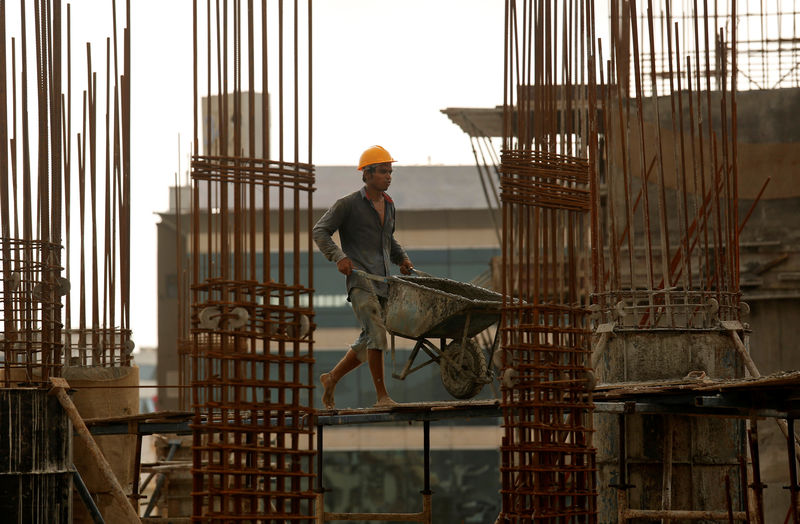By Manoj Kumar
NEW DELHI (Reuters) - India's annual economic growth surged to a more than two-year high of 8.2 percent in the three months through June, giving Prime Minister Narendra Modi's government a political boost in the final year of his term before elections.
Modi has been under pressure to make good his promise to deliver reforms and provide jobs to the millions of young people who enter the workforce each year as he faces a clutch of state elections this year followed by his planned re-election bid in 2019.
Data released on Friday showed manufacturing and consumer spending driving expansion, raising hopes that the rural economy was starting to turnaround.
The latest period's annual pace beat a Reuters poll forecast of 7.6 percent, and was the highest since India logged 9.3 percent growth in the January-March quarter of 2016.
It easily surpassed the 6.7 percent growth posted by China for the same quarter, and it restored India's growth to levels posted by the Congress governments during the decade before Modi's Hindu nationalist Bharatiya Janata Party swept to power in 2014.
"This is New India of PM Narendra Modi's vision; with a strong, sustained momentum of growth," Information and Broadcasting Minister Rajyavardhan Rathore said on Twitter, leading a drum beat of praise for Modi for his stewardship of the economy.
India's $2.6 trillion economy surpassed France's in 2017 to become the world's sixth largest, and it was not far behind the United Kingdom, according to World Bank data.
But the GDP growth comes off a low base of 5.6 percent for the same quarter a year ago and it relates to the period just before the annual monsoon rains which are the lifeblood of India's economy.
So far the rains, which run from June to September, have been slightly below normal and uneven with some areas running a deficit of over 40 percent while others are flooded.
SUSTAINABLE GAINS?
There are headwinds on the external sector with high oil prices putting pressure on inflation and rising trade protectionism affecting India's export prospects.
On Friday the Indian rupee
Also on Friday India reported a fiscal deficit
Subhash Garg, the economic affairs secretary, told reporters the government will stick to the fiscal deficit target of 3.3 percent of GDP this fiscal year. He expected the economy to grow at a pace faster than 7.5 percent in the fiscal year.
Greater government spending has given households more money to buy consumer durables, which helped the manufacturing sector post 13.5 percent growth in June quarter, in sharp contrast to the 1.8-percent contraction recorded a year earlier.
Government spending grew 12.7 percent year-on-year compared with a 1.5 percent year-on-year growth in the March quarter.
Capital investment rebounded to 13.9 percent from a 9.4 percent rise in the March quarter.
On the weak side, data suggested growth in mining slowed to just 0.1 percent compared with 2.7 percent in the previous quarter.
"This is probably the best GDP trend we have seen in the first half of the fiscal year," said Shashank Mendiratta, India economist at ANZ Bank.
He said that with a general election less than a year away the GDP numbers were mostly driven by public investment and higher consumption especially in the rural areas.
"We expect RBI to hike rates in March-quarter next year with no changes this year," he said.
On Wednesday, India's central bank said economic growth was expected to accelerate to 7.4 percent in the fiscal year ending next March, bettering the 6.7 percent posted last fiscal year, despite risks posed by higher oil prices and global trade tensions.
The Reserve Bank of India has raised its benchmark repo rate
The RBI's next policy is due on Oct.5.
In July, retail inflation eased to 4.17 percent from a year earlier, but is projected to remain around 4.8 percent in the second half of the fiscal year.
